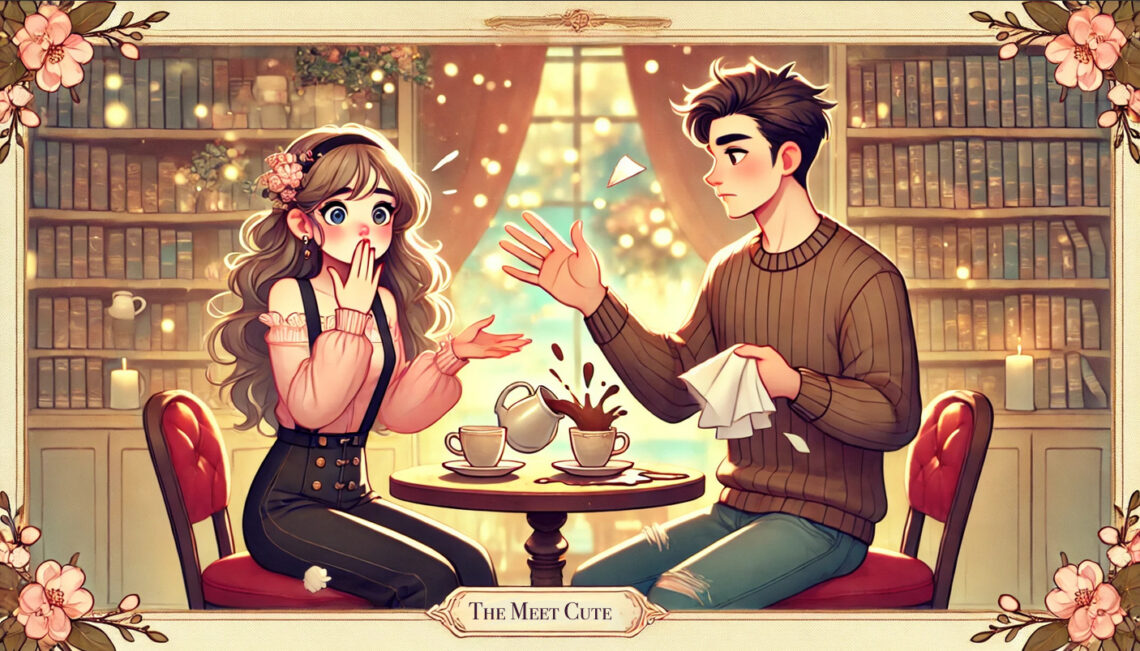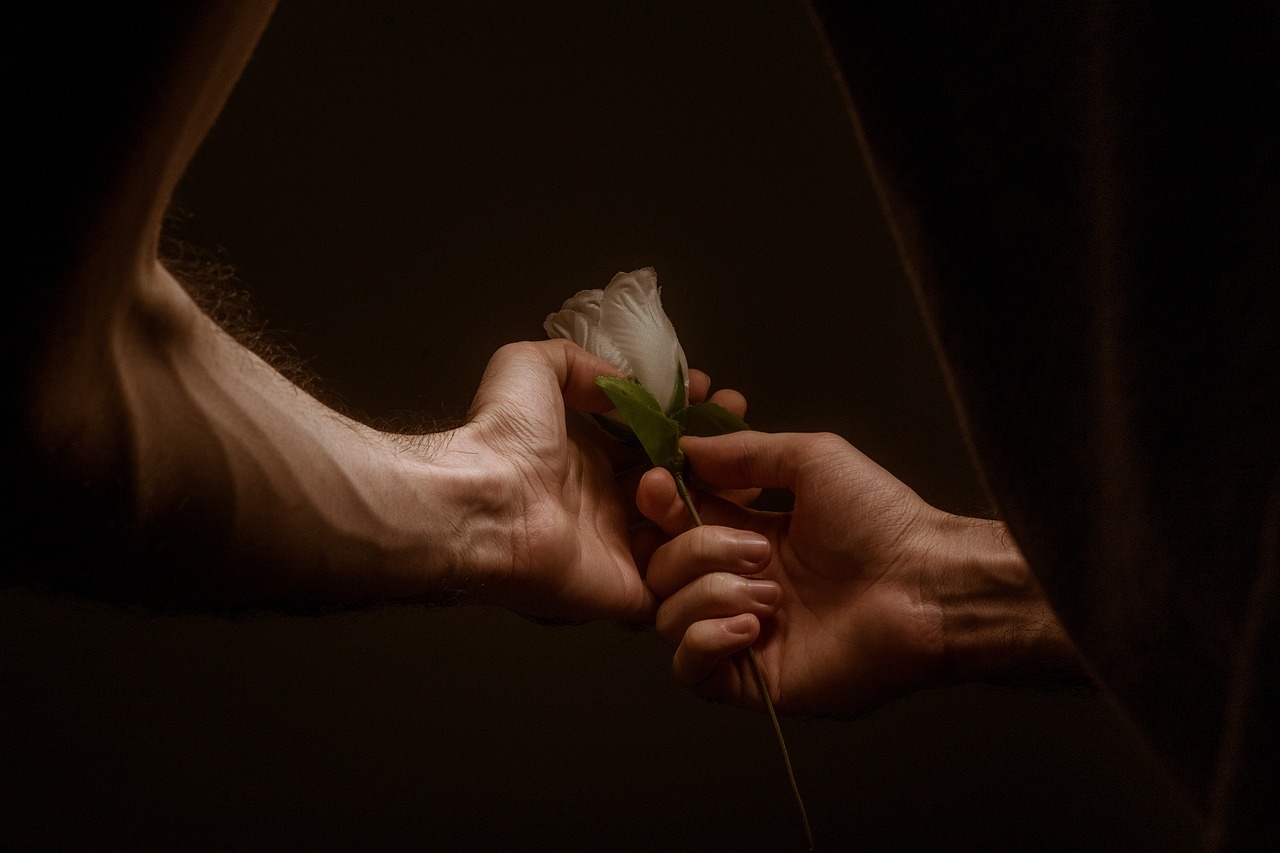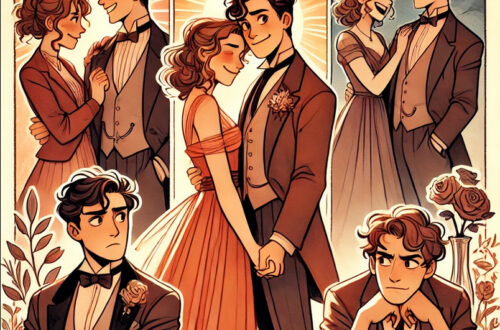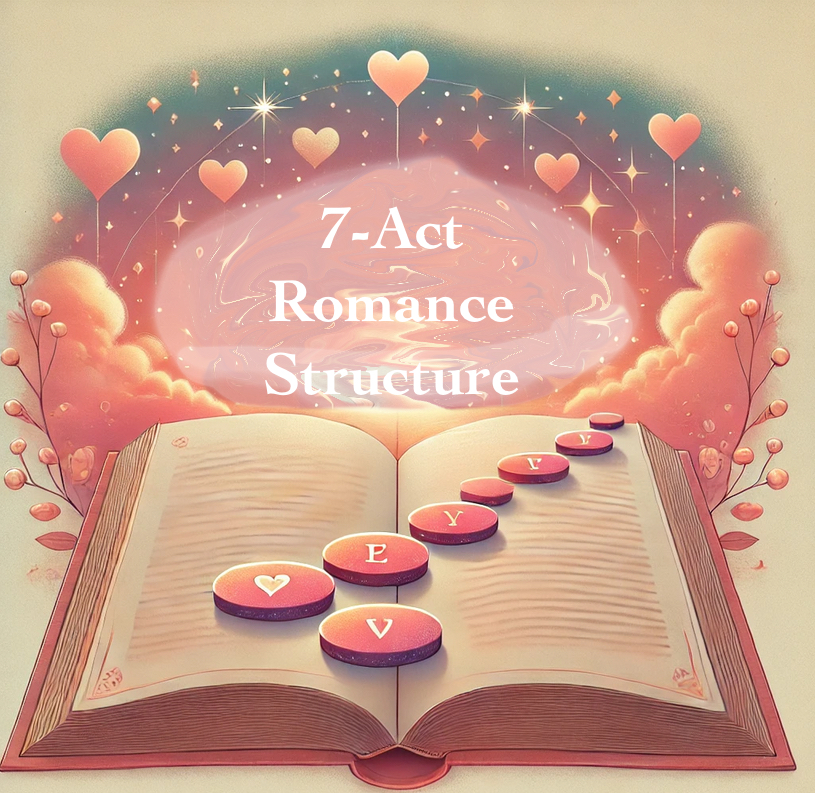-
The Romance Meet Cute: Crafting Unforgettable First Encounters
In romance fiction, the meet cute is a pivotal moment. It’s the instant your protagonists’ paths cross, often setting the tone for their relationship and the story to come. A well-executed meet cute not only hooks readers but also lays the foundation for the chemistry, tension, and emotional depth that will unfold throughout the narrative. This article delves into the essentials of the meet cute, offering tips, examples, and ways to ensure it resonates with your audience. What is a Meet Cute? The meet cute is the first significant interaction between your romantic leads. It’s where sparks fly, personalities clash, or curiosity blooms. Often memorable, humorous, awkward, or laden with…
-
Using Tropes as a Romance Writer: How Familiar Elements Can Elevate Your Story
Tropes are the building blocks of romance—those familiar plot structures, themes, and character dynamics that romance readers recognize and love. While some writers worry that tropes may feel cliché, when used well, they’re anything but. Tropes offer a sense of comfort, excitement, and anticipation for readers, making them a valuable tool for romance writers aiming to craft stories that connect. Understanding how to harness the power of tropes in fresh and creative ways can be key to building a compelling, unforgettable love story. Why Tropes Matter in Romance Romance readers come to the genre with certain expectations. They know that the story will center around love, likely with a happy…
-
Character Arcs in Romance: Balancing Personal Growth and Relationship Development
One of the hallmarks of an unforgettable romance story is well-developed character arcs. These arcs not only breathe life into your characters but also add depth and emotional resonance to the romance. In this article, we’ll explore how to craft individual character arcs alongside the romantic arc and balance personal growth with relationship development. The Dual Focus: Individual Arcs and the Romantic Arc In romance writing, you’re working with two primary arcs: The Individual Character Arc – Focuses on personal growth, resolving inner conflicts, and achieving individual goals. The Romantic Arc – Tracks the progression of the relationship, from the initial spark to the climax of the romance (often a…
-
The Irresistible Charm of the Fake Dating Romance Trope
The fake dating trope is a beloved staple in romance fiction, captivating readers and viewers with its irresistible blend of tension, humor, and heart. This trope invites characters—and audiences—into a whirlwind of contrived affection that inevitably turns into something real. But why does fake dating strike such a chord, and how does it create some of the most memorable love stories in the genre? What Is the Fake Dating Trope? At its core, the fake dating trope involves two characters pretending to be in a romantic relationship for a mutually beneficial reason. The façade might be an arrangement to please meddling relatives, a tactic to secure a promotion, or a…
-
The Differences Between Sweet Romance and Clean Romance: A Comprehensive Guide
Romance novels come in many forms, catering to a wide range of preferences. Among the most popular subgenres are sweet romance and clean romance. While these terms are often used interchangeably, they have distinct differences in tone, content, and reader expectations. Understanding these differences can help writers and readers better identify and create stories that align with their goals. What is Sweet Romance? Sweet romance refers to stories that focus on emotional intimacy and romantic connection without explicit sexual content. The term “sweet” emphasizes the heartwarming, tender nature of the romance. Key Features of Sweet Romance: Closed-Door or Fade-to-Black Scenes: Any physical intimacy, such as kissing or touching, may occur…
-
Creating Compelling Romance Characters
Building memorable and multi-dimensional characters is the heart of any successful romance story. Whether you’re writing a steamy contemporary romance, a historical love story, or a cozy romantic mystery, well-crafted characters make readers fall in love and keep turning the pages. This article breaks down the essentials and delves into advanced techniques to help you create romance characters that linger in readers’ minds. The Foundation of a Great Romance Character Core Desires and Motivations: What does your character want most in life, and how does it drive their decisions? Internal Conflict: What personal obstacles keep them from love (e.g., fears, past trauma, or self-doubt)? External Conflict: What outside forces challenge…
-
Endless Creative Possibilities in Romance Writing
The romance genre is a tapestry of limitless creative opportunities, welcoming writers with open arms into a world of heartfelt storytelling. Whether you’re drawn to the opulent balls of the Regency era or the gritty suspense of modern-day thrillers, romance offers something for every storyteller. It’s a genre that celebrates love in all its forms, allowing writers to explore profound human connections and craft tales that resonate deeply with readers. The Diversity of the Romance Genre Romance is not a one-size-fits-all genre—it’s a kaleidoscope of subgenres and themes. For those who love history, historical romances transport readers to bygone eras, immersing them in lush settings and societal intricacies. Contemporary romance…
-
Foundations of Romance Characters: Crafting Realistic Desires, Flaws, and Motivations
Developing romance characters with depth and authenticity goes beyond finding a few surface traits and hoping for sparks to fly. It requires uncovering core desires, motivations, insecurities, and flaws that both connect and challenge two individuals in ways that allow for conflict, growth, and, ultimately, love. Let’s dive into these foundational elements with practical tips, examples, and exercises to bring your romance characters to life on the page. Core Desires and Motivations In any romance, the core of a character’s journey often lies in the push and pull between their internal motivations (what they truly need) and external motivations (what they think they want). These layers create depth and give…
-
Mastering the 7-Act Romance Structure: A Blueprint for Unforgettable Love Stories
If you’re a romance writer, you know that crafting a compelling love story isn’t just about the meet-cute and the happily-ever-after. It’s about guiding readers through the emotional journey of your characters as they struggle, grow, and ultimately fall head over heels for each other. To do this effectively, many successful romance novels follow a 7-act structure—a framework designed to hit all the beats readers crave, from initial attraction to that heartwarming finale. In this post, we’ll walk you through the basics of the 7-act romance structure, showing you how each act builds the romance while deepening character development. Whether you’re new to writing romance or just looking to sharpen…
-
Connecting with a Passionate Audience: The Joy of Writing Romance for Those Who Love Love
In the world of fiction, romance stands out for its ardent, enthusiastic audience. Romance readers aren’t just passionate about the genre—they’re devoted, forming a unique and deeply emotional bond with the stories and characters. When an author writes romance, they’re doing more than crafting a story; they’re speaking directly to readers who crave tales of love, vulnerability, and hard-won happiness. Romance Readers: An Audience That Loves Deeply Romance readers are remarkable for their dedication to the genre. They don’t simply read romance novels; they immerse themselves in them. They cherish well-drawn characters, fall in love with swoon-worthy heroes and heroines, and savor those moments of tenderness, longing, and triumph that…















